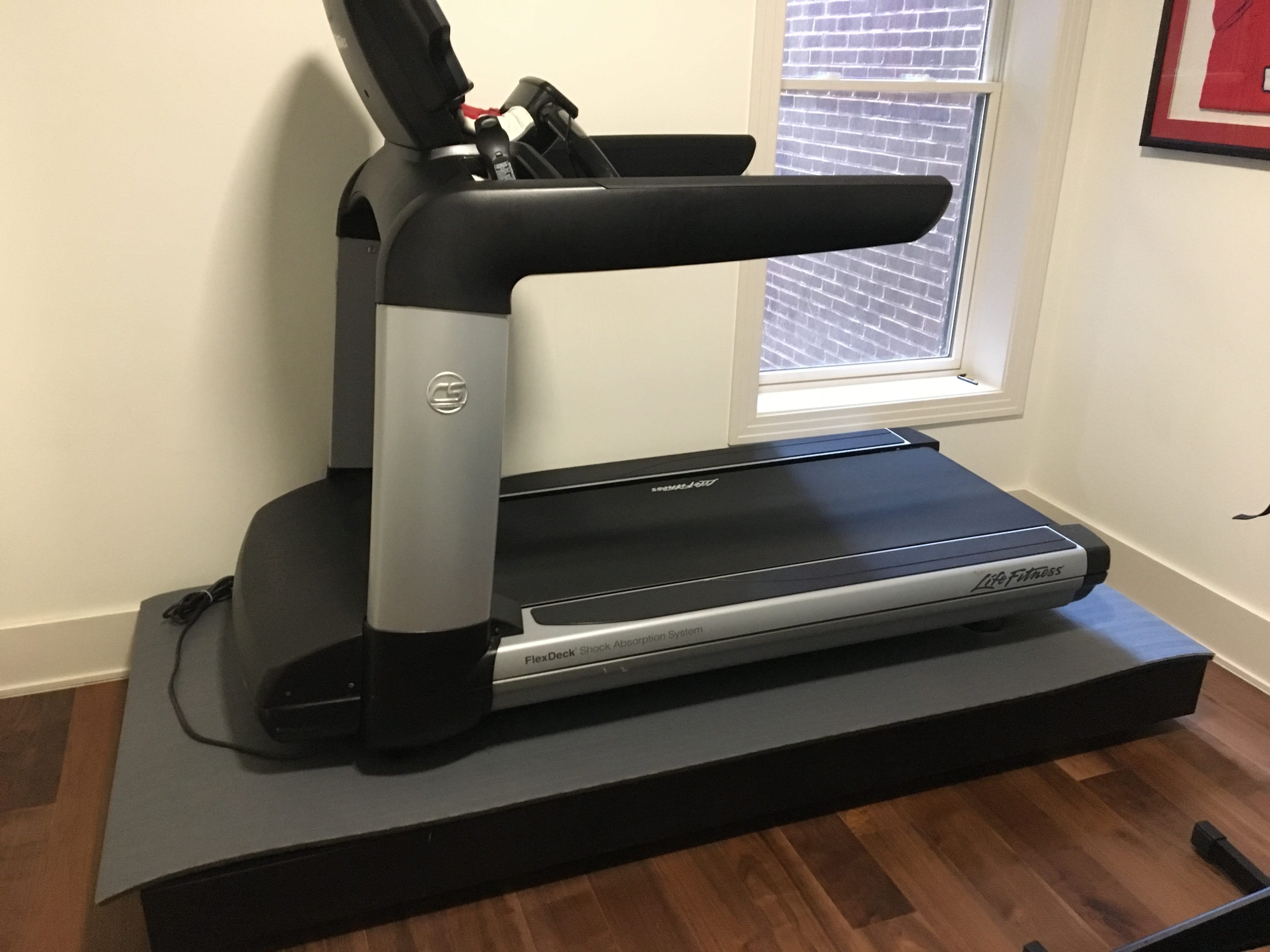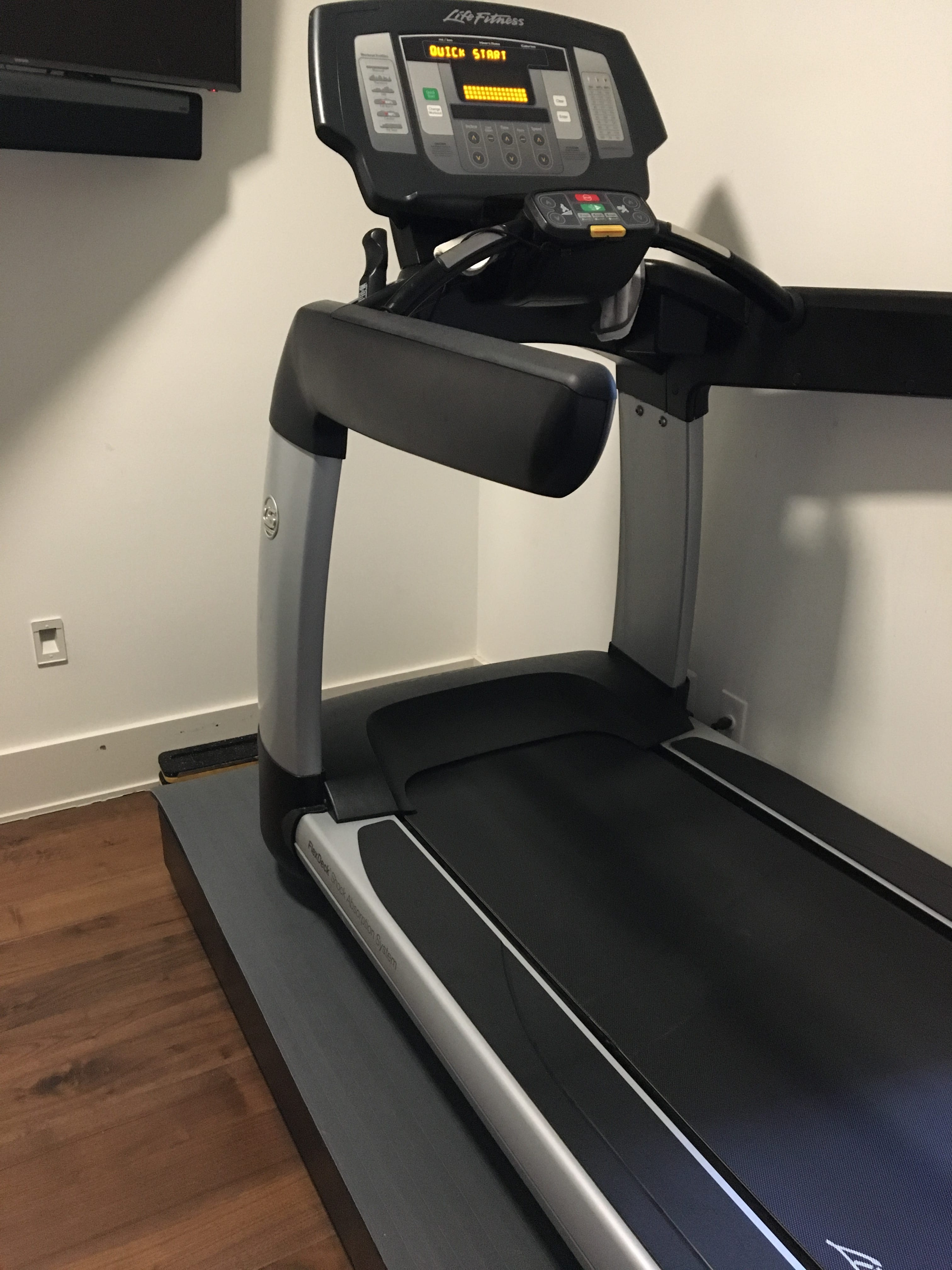The Challenge
From Washington, D.C.’s historic DuPont Circle district, an avid runner and treadmill user contacted Phoenix Noise & Vibration regarding vibration complaints from a neighbor. After the renovation of the runner’s two-story condominium, which included a dedicated fitness room on the second floor, the third-floor neighbor above complained of perceptible vibration during treadmill use.
While the perimeter of the building is constructed of brick, the floor structure is composed of common wood joists dating back to the early 1900’s, and while strong, are still flexible and move with the impact of the treadmill. The rhythmic nature of the treadmill impacts excited the structure’s natural frequency, which transmitted vibration up through the walls of the condominium to the demising floor/ceiling above, where it became perceptible to the third-floor neighbor in multiple rooms.
Attempting to reduce the vibration transfer, the condominium owner tried a variety of rubber-based isolation mounts beneath the treadmill in various combinations but without success. While rubber-based isolators can be highly effective at reducing high frequency vibration, they become relatively ineffective at lower frequencies, which are the cause of vibration impact upon the neighbor above. Use of the treadmill by the runner excited the low, 10 Hertz frequency of the floor.
The Solution
To successfully mitigate vibration transfer from the treadmill to the floor, an isolation system which exhibits a very low natural frequency was required; well below the 10 Hz natural frequency of the floor system. Such a low frequency is generally achieved using either steel spring or pneumatic isolators. In this case it was determined that steel spring isolators would provide the best and simplest solution. Working with engineers at Kinetics Noise Control, Phoenix Noise & Vibration aided in designing a spring mounted inertia base which could be installed in the historic condominium’s second floor fitness room. Not only did the treadmill require spring isolation, it required a heavy inertia base to stabilize the system during treadmill use by the runner and to lower the natural frequency of the system. The resulting spring isolated inertia base weighed on the order of 1500 lbs. Due to the significant weight of the base, a structural engineer was consulted to analyze the ability of the floor to safely support the isolation system with the treadmill and the runner.
Initially “running on springs” provided a strange, unstable sensation to the treadmill user. However, this was primarily when first stepping onto the treadmill. After running begins, the sensation fades away and there is little or no perceptible difference from running on a non-isolated treadmill. Happily, the vibration has been greatly reduced along with the level of complaints.
The condo owner is quoted as saying, “This is a life changing case study for someone trying to make a home gym work in the urban context.”


